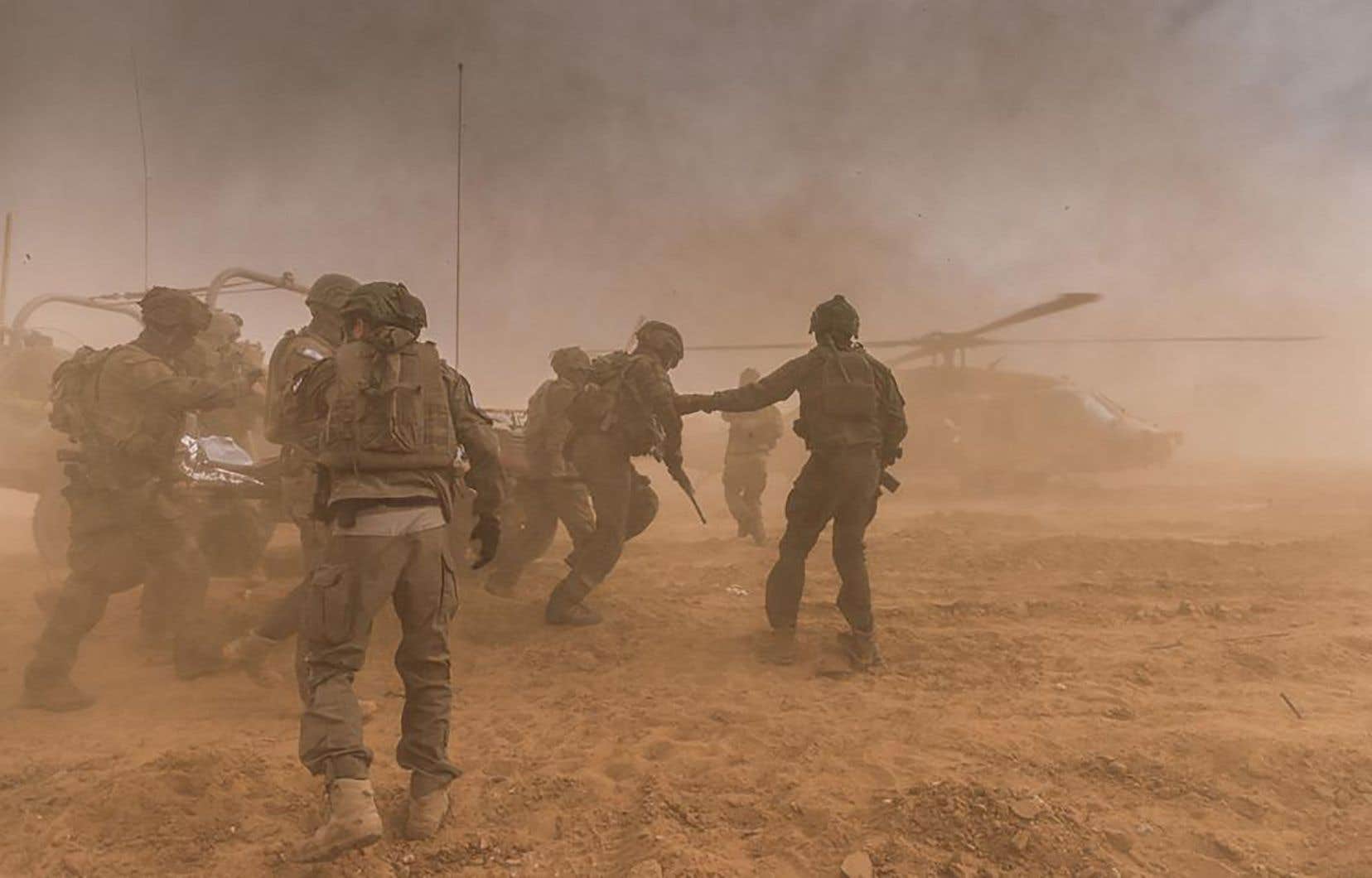The Israeli Defense Minister presented for the first time a plan for the post-war in Gaza, where Israel continues its bombings and ground operations on Friday, almost three months after the start of the conflict opposing it to Palestinian Hamas .
The Israeli army notably announced “the elimination of a terrorist cell” which wanted to attack one of its tanks in Bureij during the night, and the destruction, at the cost of ground fighting, of several rocket launch sites towards Israel in Khan Younes, the large southern city, epicenter of the fighting for several days.
Shortly before US Secretary of State Antony Blinken took off on another tour of the region, Defense Minister Yoav Gallant for the first time unveiled an Israeli plan for post-war Gaza, after two days of high tension, following the elimination of Hamas number two in Lebanon.
Israel has vowed to “destroy” the Islamist movement classified as terrorist by Israel, the United States and the European Union after its unprecedented attack on Israeli soil on October 7, which left around 1,140 dead, mainly civilians, according to a AFP count based on Israeli toll. Around 250 people were also taken hostage, including around a hundred released during a truce at the end of November.
Since then, this war has left 22,600 dead in the Gaza Strip, mainly women and minors, according to figures released Friday by the Hamas Ministry of Health.
Divided government
The plan presented by Yoav Gallant, which has yet to receive the approval of the divided government, provides for the continuation of operations in Gaza until “the return of the hostages”, the “dismantling of Hamas’ military and governance capabilities” and ” the elimination of military threats.
As for the post-war period, Mr. Gallant pleads for a solution without Hamas, but without an Israeli civilian presence either, effectively rejecting proposals from two far-right ministers, who had recently called for the return of Jewish settlers to Gaza and the “emigration” of the Palestinian population. These comments sparked an international outcry, denounced in particular by the American ally and the head of European diplomacy.
“There will be no Israeli civilian presence in the Gaza Strip after the objectives of the war have been achieved,” Mr. Gallant declared Thursday evening, specifying however that the army would retain “its freedom of action” in this territory to curb any possible “threat”.
“The people of Gaza are Palestinian. Therefore, Palestinian entities will be in charge (of management) on the condition that there is no hostile action or threat against the State of Israel,” the plan underlines, without saying precisely who should administer.
On the ground, the situation remains dramatic for the approximately 2.4 million Gazans, approximately 1.9 million of whom have been displaced by the conflict. Hospitals no longer operate or operate with great difficulty, serious shortages of water, food and medicine, the state of affairs is catastrophic, underline the UN and NGOs.
“About 500,000 displaced people live around the shelters, in the streets or on the roads,” Adnan Abu Hasna, a spokesman in Gaza for the UN agency for Palestinian refugees, told AFP.
“The problem is that all, or almost all, the inhabitants of the Gaza Strip are being pushed towards the town of Rafah” in the south, he added. “The city is usually home to 250,000 people. Today, there are more than 1.3 million.”
” There is nothing left “
Families arrive in Rafah with everything they managed to take, their belongings piled up on the flatbed of pickup trucks, the roofs of overloaded cars, or on carts pulled by donkeys or attached to tractors, noted Friday the AFPTV.
With cans under her arm, a woman walks along an avenue. “We fled from the Jabaliya camp in the north to Ma’an (a district of Khan Yunis) and now we are fleeing from Ma’an to Rafah, they were shooting at us. We have no water, no electricity, no food,” she explains to AFPTV.
In these conditions, it is difficult for residents to imagine a post-war period.
“The future of Gaza after the conflict is dark, the coming period will be even more difficult than the previous one,” predicts Abu Mohammed, 60, who fled the Bureij refugee camp for Rafah. “I think that the Palestinian Authority, with legitimacy, like the Arab countries, are the ones who can govern Gaza, with the help and agreement of Hamas. Hamas must give up power to save the population.”
“The future will above all be reconstruction. Look at the destroyed hospitals, the ruined schools. There is nothing left,” adds Ziad Abdo, 60, who also fled from the north to Rafah.
Preventing the extension of the conflict
Some 150 trucks were able to enter the territory on Thursday, but NGOs and the UN regularly point out that these supplies remain well below the needs of the population.
The American Secretary of State, Antony Blinken, will precisely plead during his regional tour that humanitarian aid be increased “considerably”.
He also intends to work to prevent an extension of the conflict in the region, after the rise in tension caused in recent days by the elimination – attributed to Israel – of Hamas number two in Lebanon, in a Hezbollah stronghold, and an attack, claimed by the Islamic State group, which left 89 dead in Iran according to a latest report.
On the border with Lebanon, exchanges of fire between Hezbollah – a Shiite Islamist movement supported by Iran and ally of Hamas – and the Israeli army have been almost daily since the start of the conflict. Friday morning, the Israeli army again announced that it had carried out air raids targeting Hezbollah “terrorist” sites.
In the Red Sea, the Houthi rebels of Yemen, supported by Iran, are increasing attacks on commercial ships in “support” of Gaza, while tension is also rising in Syria and Iraq, where American bases are targeted.
